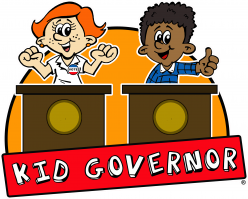Connect with Other Projects and Groups
As you read in “How to Work with Your Classmates and Friends,” it takes a team of people to make a difference on an issue; no one can do it alone. As you work on an action plan, research other groups that are also working to make a difference on your issue. Contact those groups or projects to see if you can team up to increase the number of voices working to make a difference.
- Kid Governor Spotlight: 2019 Connecticut’s Kid Governor Cabinet Member Jason Hayes ran on a platform of supporting children’s literacy. One goal of his was to install Little Free Libraries. After he built a library at this school, he connected with a local project to install multiple libraries and is now helping to promote literacy citywide.
Design a Hands-On Project
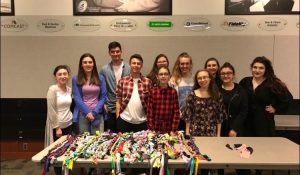
Is there an activity or project that kids can do to support your community issue? Can students do a community clean up for your platform of too much litter in parks? Can they distribute messages of kindness to students to tackle the problem of too much bullying? Think about simple projects that people of all ages can do to support your issue, no matter where they live!
- Kid Governor Spotlight: 2019 New Hampshire’s Kid Governor Lola Giannelli ran on the platform Helping Animals. She encouraged communities to make dog toys from old t-shirts to support her platform to end animal cruelty. She made a tutorial video to teach people how to make the toys.
- Kid Governor Spotlight: 2016 Connecticut’s Kid Governor Elena Tipton ran on the platform Campaign for Kindness. She asked students to designate, decorate, or build “Buddy Benches” on their local playgrounds. She created a guide to help students do this project.
Design Posters to Raise Awareness
Posters can be good tools for educating your school or community about an issue. Some awareness posters have pictures, some have information and words, and some have both! As part your action plan, you might decide to create a poster about your issue to distribute, or you might invite others to design their own posters. Remember: whether you are hanging posters in your school or in the community, you must ask permission before hanging!
- Kid Governor Spotlight: 2018 Connecticut’s Kid Governor Megan Kasperowski
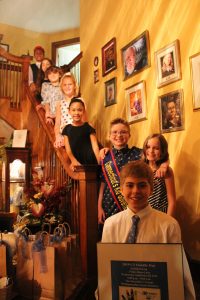
ran on the platform Stronger Than Cancer: Lifting Spirits & Changing Lives. She coordinated a statewide poster contest inviting students to submit artwork that raised awareness of cancer. The winning designs were distributed to schools statewide for their “Hat Day” awareness events.
Working with Elected Officials
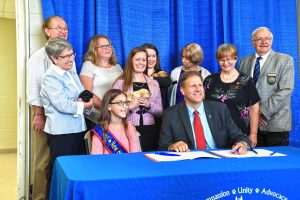
Every year, registered voters cast ballots to select people to represent us in our government. Those who are elected are called “elected officials.” Depending on the year, voters may be voting for local officials (selectmen, councilors, mayors, board of education members, etc.), state officials (state representatives, state senators, the governor, etc.), or federal officials (congresspeople, the president, etc.). Elected officials are responsible for acting on behalf of the people they represent and making decisions based on what those people want to see changed. We can tell our elected officials what issues we care about and ask them to support our causes. Visit the “Writing to Elected Officials” page to learn more about contacting your elected officials!
- Kid Governor Spotlight: 2019 New Hampshire’s Kid Governor Lola Giannelli ran
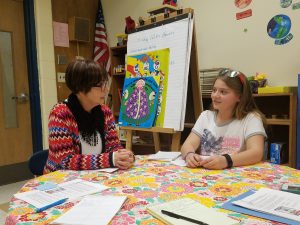
on the platform Helping Animals. She is supporting a statewide bill about purchasing animals in pet stores, which was proposed by a New Hampshire State Representative. Lola attended a hearing to share her support of the bill.
How Can I Partner with Community Organizations?
Partnering with groups, organizations or projects that are also working on your community issue can lead to a big impact in your community. These groups can provide information about your chosen issue, help you brainstorm ideas, and support your action plan. Check with your teacher before you begin this work.
- Prepare by practicing how you describe your chosen community issue, why it’s important, and your action plan in a minute or less.
- Make a list of specific tasks you need others to help with. These tasks may include making posters, organizing an event, writing letters, talking to other people in the community or community leaders, etc.
- Research which organizations in your community are working on your issue. Your school’s office or your principal may be able to help you get started on this. As you begin, identify a trusted adult to assist you. You may wish to ask a teacher, parent, aunt, uncle, grandparent, or another grownup you trust.
- When you find a good connection to a community organization, contact a person there to schedule a meeting. Your teacher or a trusted adult can help you send an email from school, or you can make a phone call at home from a trusted adult. Here is an example of what you might say in an email or phone call. You can fill in the blanks where you see words in [brackets]:
Dear [Mr./Mrs./Ms.] [NAME],
My name is [NAME] and I am a 5th grader at [SCHOOL]in [TOWN]. I am writing to you today because I am concerned about [YOUR COMMUNITY ISSUE]. This is an issue that affects me, my family, and my community because [HOW IT AFFECTS YOU, YOUR FAMILY, YOUR COMMUNITY]. I believe that this issue is important because [WHY IT IS IMPORTANT]. I hope that you can help me work towards a solution to this problem in our community. Would you be willing to speak with me and [NAME OF ADULT] so that I can ask you ask some questions about your organization’s work on this issue?
Please contact me at your earliest convenience at [EMAIL OR STREET ADDRESS]. Thank you for your time.
Sincerely,
[YOUR NAME]
If you hear back from a community organization and they are willing to speak with you, here are some tips for before, during and after your conversation:
- Before the interview: Write a list of a few questions to ask the person you are interviewing. You may want include questions such as: What does your organization do in our community? What services do you offer? What made you become interested in this type of work and this issue? Who in our community benefits from your work? What challenges do you face? If you had one message for students about your work, what would it be? How do you measure the success of your work? Are there any opportunities to volunteer with your organization? How can my class and I work with you to make a difference on this issue? What advice do you have for me as I work on this community issue?
- During the interview: Start by describing your community issue and action plan using your one-minute speech. Ask the other person to tell you about themselves and their organization or group. Then, ask your questions and remember to listen carefully and take notes. Be polite and respectful.
- After the interview. Take a few minutes to reflect on your conversation. Write down a summary of what you learned and what ideas you have. Be sure to send a thank you note or email to the person after your interview.
Next: Taking Action Online
Go Back: Taking Action in Your School
